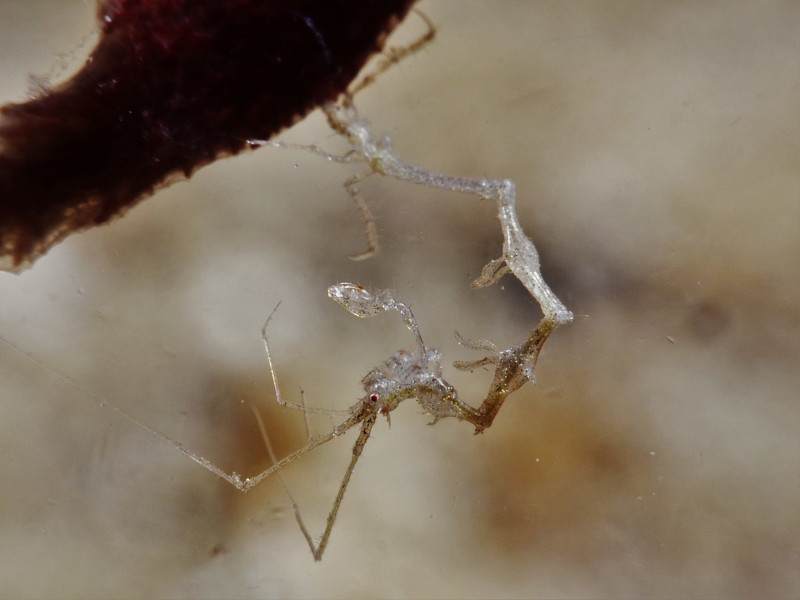
Skeleton Shrimp Facts
- It must be pointed out that the descriptive term of Skeleton Shrimp actually serves as the collective common name for an entire Family of arthropods. All members of the remarkable group, as the name suggest, evolved as purely marine species.
- It’s also a relatively large group, containing hundreds of separate species. The first official recognition of the Family as such occurred in the year 1814. This took place as a direct result of the work of the English zoologist, William Elford Leach.
- Given its astounding ability to virtually disappear into its surrounding environment, it also has other appropriate common names. Perhaps chief among these alternate, but highly descriptive names, is the applicable term of the ghost shrimp.
- Since the term of Skeleton Shrimp applies to so many different species, the various types naturally have differing statuses. Many of them, unfortunately, presently appear on the Red List of Threatened Species, routinely published by the IUCN.
- Although each species faces varying situations, dangers, and threats, most of them have some in common. One of these would be the danger posed by habitat loss, due to changing conditions in the oceans. The greatest, though, consists of climate change.
Related Articles
Skeleton Shrimp Physical Description
Since the term of Skeleton Shrimp refers to a vast number of different species, physical differences quite obviously exist. Despite that fact, however, many similarities between them naturally also exist, given the genetic relationship they each share.
One of these shared traits is the tendency of most of them to display a strong degree of the physiological trait of sexual dimorphism. In the case of the majority of members of this Family, that characteristic manifests itself in terms of sheer physical size.
The males of most species of these creatures attain a significantly greater size than their female counterparts. Aside from this tendency, the various forms also share one more defining trait. In fact, this characteristic serves as the source of the collective common name.
Each form of the amazing Skeleton Shrimp evolved as highly elongated and thin in shape. These further possess convoluted, twisting shapes to their bodies. Their color patterns, meanwhile, also differ between each of the members of the remarkably evolved Family.
- Kingdom: Animalia
- Phylum: Arthropoda
- Class: Malacostraca
- Order: Amphipoda
- Family: Caprellidae
Skeleton Shrimp Distribution, Habitat, and Ecology
Because so many forms of Skeleton Shrimp exist, the Family as a whole possesses an extraordinary range of habitation. In fact, members of this remarkably evolved group fill all areas of virtually every ocean and sea on the planet with their numbers.
For the moment, the overall global population of this marvelous Amphipod appears to be spread around the planet roughly evenly. Due to this truly cosmopolitan distribution, they quite frequently encounter human presence, though most humans never notice them.
This mainly occurs due to the nature of the choice of habitat most of the species exhibit. The great majority prefer to live in the subtidal waters and low intertidal zones. More specifically, most elect to spend their time in areas of marine plants, mostly eelgrass.
A minor percentage of them, though, do inhabit the greater depths of the oceans. These, however, virtually never interact with humans. Wherever they appear, these creatures developed as omnivores, feeding on protozoans, diatoms, smaller amphipods, and detritus.
Most forms of Skeleton Shrimp further feed as ambush predators, much like praying mantises. Though not frequently preyed on themselves, a few species do consume them occasionally, The majority of their predators consist of shrimp, nudibranches, and jellyfish.
Species Sharing Its Range
Check out our other articles on 5 Deceptively Dangerous Herbaceous Plants, Black-and-white hawk-eagle, McMurdo Dry Valleys, Purple Passionflower, Flatback Sea Turtle, Purple Frog, Japanese Hare
